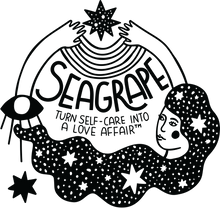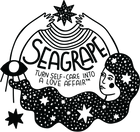Guest Blog: Diving Deeper into a Tarot Practice: Recognizing Characters and Events of the Tarot in Everyday Life by Coleman Stevenson
Join us for Coleman's upcoming Tarot 101 and 201 classes!
When many of us begin an inquiry into the Tarot, it’s often with a view of the deck as an object, as a tool that exists externally, a set of symbols that can converse with us about things we might be experiencing. Certainly, this is true, but what we realize as we progress from curiosity to committed study is that it all already exists woven into our lives and inside each one of us as well. Learning to recognize tarot concepts in your interior world and in the world around you is a crucial part of understanding how the deck really works.
Often awareness of this begins with the question “What’s your favorite tarot card?” You might intuitively feel an affinity for a particular card, or in striving to answer the above question when asked, you locate one that feels intriguing, valid, or familiar. While that’s a great place to start experiencing the reality behind the cards, it’s often more about aspiration than recognition. You note something in a card that you might want to have as a personal quality. You admire the practical action of The Magician; wish to be able to wield the subtle power of Strength or the consistent moderation of Temperance; long to bask in the confident glow of The Sun. What you may not yet realize is that the Tarot is a journey – it’s our Journey. We’ve all been on it since birth and will be on it until the day we die, cycling through at various levels. We will encounter and embody every card at different moments and in different phases of life. Once this becomes apparent, then you can truly learn the cards, not just memorize their stated meanings.
For example, any time you start something new, maybe without a set plan in place, you’re working with Fool energy, and you come to know that card better. In knowing that card better, you then come to know yourself more deeply. It’s a beautiful feedback loop. It may sometimes track that one Major Arcana card follows the next in an active Journey cycle. But the way they manifest in your life can be more occasional than that as well. And the successes and anxieties of the Minor Arcana are constantly running all around and through you, day in, day out.
As you work to increase your awareness of Tarot concepts in your life and the world around you, consider also how your Journey might intersect with those of people in your life. The end of a relationship serves as an apt example of such an intersection at play. Perhaps a sudden realization unmasks a major truth to one partner about her need to travel a different path in life. For her this is experienced as Judgement or even The Chariot; for the other partner, the one who feels left behind, this situation may be experienced as a severe Tower moment. All sorts of conflict and compatibility with others could be impacted by the alignment of Journey stages. In a confident, growth-filled Sun stage, you might experience conflict with someone who is still grappling with a Hanged One experience, unable to move forward. Conversely, two people experiencing a Hermit phase simultaneously may find they deeply understand each other’s present needs for time and space spent in solitude.
Ultimately, the Fool’s Journey is about personal, individual expansion, but we are influenced in many ways by the experiences and actions of others, and overlapping Journeys are mutually beneficial. When these archetypal roles are acknowledged, it can help both parties expand their experiences with the Tarot archetypes. For example, you as The Fool in a new learning situation might meet The Magician in a teacher or mentor relationship. Without your presence, they would not be able to fulfill that stage of their own Fool’s Journey. While learning more about the Major Arcana can help us make the most of these encounters, or even avoid them when necessary, it is, of course, a fluid thing. Someone who is The Magician for you at one stage might become another figure at a later point. We should not trap someone at a certain Journey stage, as we also would like the flexibility to progress and change ourselves. The Tarot, after all, is about growth.
It might help to keep a small notebook with you or use a Notes app on your phone to record any hints of tarot activity in your daily life. Even if you’re not fully sure what you’ve encountered, writing it down will allow you to return to the rough idea later and process it more fully. You might want to take note of emotions you feels in certain situation, visual symbols you come across while going about significant activities, or even certain types of interactions you have with others that have more than a casual impact on you. Sometimes you don’t realize the experience you’ve had with one of the Tarot stages until after the fact. And if you don’t know the cards well yet, you can scan them or your tarot guide for images and key words that might match an experience you had. Even taking a careful look back at past experiences via Tarot archetypes can help you process them freshly. For example, you might find yourself in unfamiliar surroundings or faced with an offer to spontaneously try something new. In the moment what registers might be either excitement, trepidation, or perhaps both. Thinking back on the moment later, you can start to see themes of The Fool in this experience: a figure takes a step off a high cliff without knowing where they will land; process over results; a new adventure; an open, willing attitude. When presented with a new opportunity, did you lean into it, or did fear of not knowing what would happen prevent you from exploring? How might a more playful attitude have helped you navigate the situation? If you did take a Fool’s leap into the unfamiliar, what did you learn about yourself? Where did the experience lead that you are grateful to have journeyed? Still in the initial stages of something new? How can thinking about yourself now as The Fool help you make the most of the events to come?
The same is true for the experiences of the Minor Arcana. The Tarot speaks endlessly about hope. We are never given truth about challenging circumstances without also receiving guidance about how to move forward through adversity. Let’s say, for instance, that you’re having a really terrible day at work. Every single responsibility seems to keep piling up on your shoulders. The burden is becoming so intense you don’t know how you’re going to be able to accomplish everything. Do you see yourself suddenly as the 10 of Wands, feel the weight of that giant bundle of sticks, so heavy that you think you’ll break from supporting it all alone? If you can, for a moment, see yourself in any aspect of that card, then you’ll also be able to receive that card’s wisdom for how to remedy the situation. Is the goal at the end worth the work? If so, you can keep going, one task at a time. The card also asks if you’ve unnecessarily taken the burden on alone. Help is often available, but you have to ask for it instead of assuming others will offer, especially if you are perceived as someone who can manage on your own. Finding such encouragement in the cards when you are feeling defeated can even shift your behavior, altering the outcomes in a positive way.
If you’re a writer or an artist, taking notes about your experiences in terms of the Tarot might also lead to new or enhanced creations. Such a process of collecting notes about my experiences, correlated with Tarot characters, helped me expand and deepen the content of many of the poems in my most recent collection. Expressing certain feelings and encounters in the language of the cards allowed me to make my poems additionally accessible for my readers. Rather than using exclusively a personal symbolism, Tarot concepts make my work more universal. These symbols have been with us for centuries because they are so familiar. This is also why increased representation in Tarot art is so essential; we all need to be able to locate our likenesses and experience the tangible details of our lives in the cards for them to feel fully relevant. Even as card art changes over time, allowing more people to connect, the meanings contained therein shift less. The Tarot continues to be a collection of common human experiences— love, loss, triumph, adversity, passion, anxiety, perseverance, defeat, rebirth… The list goes on an on. If you’ve felt or experienced it, it’s in the cards.
---
Coleman’s new book pf poems, Light Sleeper, is available now! Order it from her shop, through the publisher, Deep Overstock, or via major online book sellers, including bookshop.org.
etsy.com/shop/thedarkexact
deepoverstock.square.site/product/light-sleeper-coleman-stevenson/18
bookshop.org/books/light-sleeper-poems/9781949127140







+Leave a comment